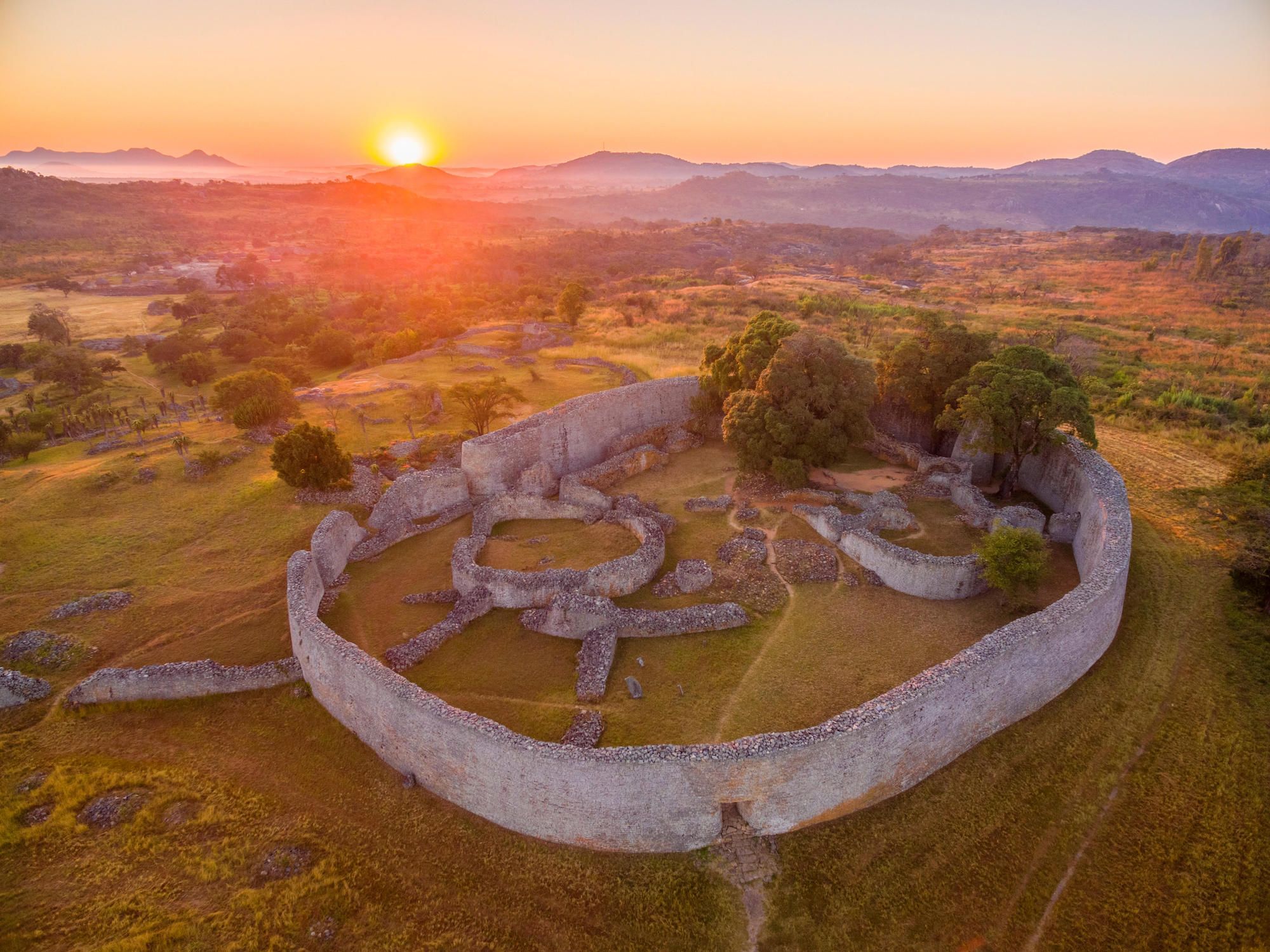The Great Enclosure Zimbabwe


The Great Zimbabwe Enclosure was completed approximately 1450. It was a wall structure punctuated with turrets and monoliths to form the earlier Hill Ruin. Turrets were a small tower on top of a larger tower. A monolith was a single piece of stone standing upright and usually large, it served as a monument or a pillar. There is a massive outer wall that is 32 feet high. On the inside the enclosure is smaller, the walls are parallel to the exterior wall creating a tight passageway leading to large towers. There are three sections the first is the Hill complex, the second is the Great Enclosure which is obviously the most exciting, and the last is the Valley ruins.
 |
| Great Enclosure Map |
Starting with the first section the Hill complex, it is a structural ruins that sits at the top of the steepest Hill of the site. It is a religious center and the oldest part of great Zimbabwe it was built around 900 C.E.
The second section is The Great Enclosure, which is a walled circular area just below the Hill complex. This was built in the 14th century each wall is over 9.7 meters high which is 32 feet, and the circumference of the circle is about 250 meters which is approximately 820 feet. A fun fact, all of the walls were built without mortar which is a stink substance that is similar to cement. They relied on shaped rocks to hold the walls together. The enclosure is unknown, but archaeologists suggest that it could have been a Royal residence or a symbolic grain of storage facility. This enclosure is one of the largest existing structures from ancient Sub-Saharan Africa.
The third section is the Valley ruins, it has a significant number of houses made of mud brick near the enclosure, but not too close. It is described with the number of houses that Great Zimbabwe's population lives in, this is about 10,000 to 20,000 people.
Researchers have discovered that there are unearthed soapstone bird sculptures in the ruins. They are a religious function in the are displayed on pedestals. They appear on the modern Zimbabwean flag and is a symbol of Zimbabwe. Another fun fact about the ruins is that, they are designated to United Nations educational, scientific and cultural organization World Heritage site in the 1986.
Dr. Nancy Demerdash, "Great Zimbabwe," in Smarthistory, October 8, 2016, accessed November 27, 2020, https://smarthistory.org/great-zimbabwe/.
National Geographic Society. “Great Zimbabwe.” National Geographic Society, 4 Mar. 2020, www.nationalgeographic.org/encyclopedia/great-zimbabwe/.

I really like how well you described Great Zimbabwe. I also found it very helpful that you included a map of the area. It really helped visualize how the whole thing is layed out.
ReplyDelete